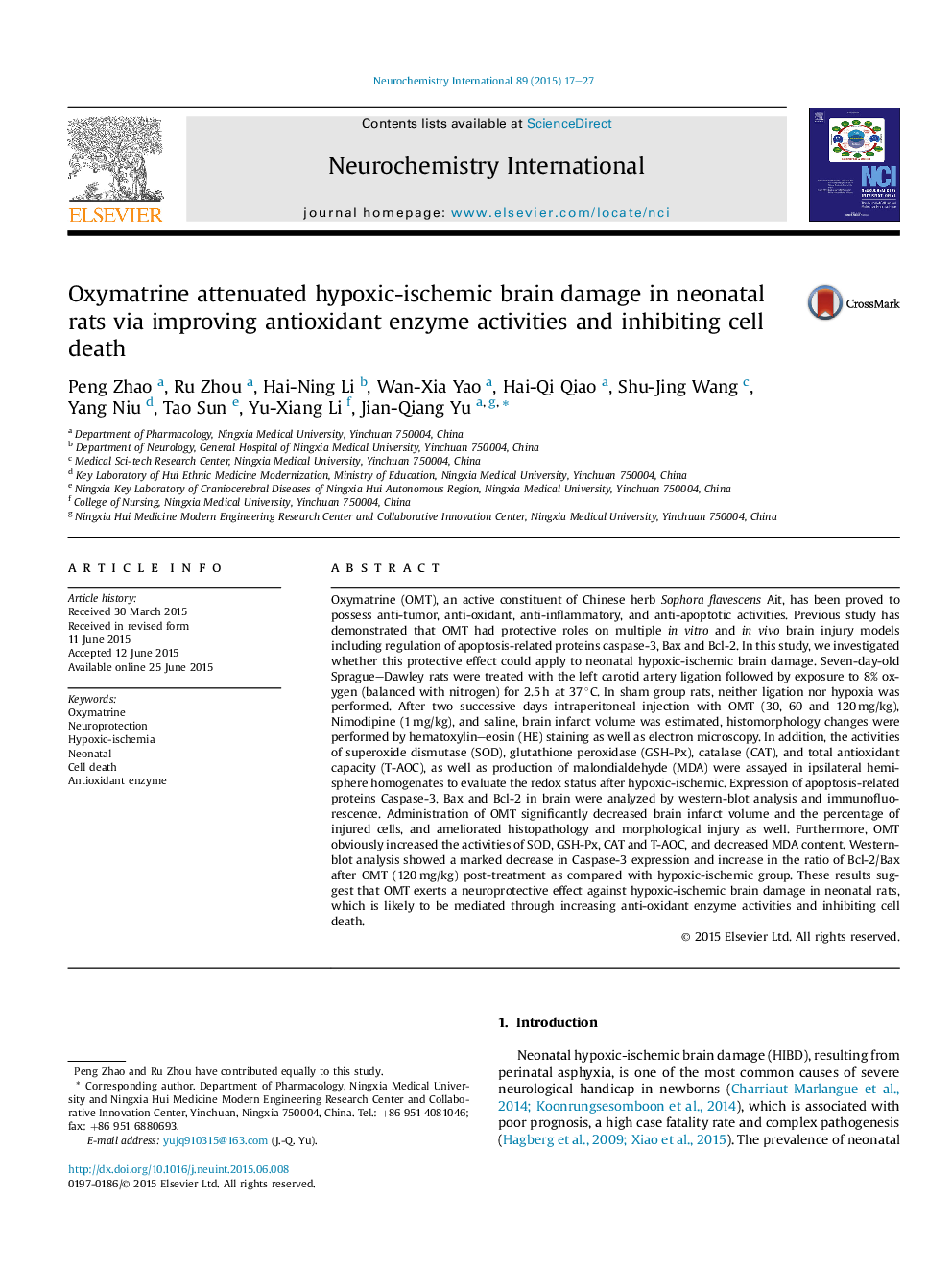| کد مقاله | کد نشریه | سال انتشار | مقاله انگلیسی | نسخه تمام متن |
|---|---|---|---|---|
| 2200379 | 1551286 | 2015 | 11 صفحه PDF | دانلود رایگان |

• Oxymatrine has shown neuroprotective effects on HIBD in neonatal rats.
• Oxymatrine improves antioxidant enzyme activities on HIBD in neonatal rats at 48 h.
• Oxymatrine increases the ratio of Bcl-2/Bax on HIBD in neonatal rats at 48 h.
• Oxymatrine decreased the expression of Caspase-3 on HIBD in neonatal rats at 48 h.
• Oxymatrine may have potential as neuroprotective agent for HIBD.
Oxymatrine (OMT), an active constituent of Chinese herb Sophora flavescens Ait, has been proved to possess anti-tumor, anti-oxidant, anti-inflammatory, and anti-apoptotic activities. Previous study has demonstrated that OMT had protective roles on multiple in vitro and in vivo brain injury models including regulation of apoptosis-related proteins caspase-3, Bax and Bcl-2. In this study, we investigated whether this protective effect could apply to neonatal hypoxic-ischemic brain damage. Seven-day-old Sprague–Dawley rats were treated with the left carotid artery ligation followed by exposure to 8% oxygen (balanced with nitrogen) for 2.5 h at 37 °C. In sham group rats, neither ligation nor hypoxia was performed. After two successive days intraperitoneal injection with OMT (30, 60 and 120 mg/kg), Nimodipine (1 mg/kg), and saline, brain infarct volume was estimated, histomorphology changes were performed by hematoxylin–eosin (HE) staining as well as electron microscopy. In addition, the activities of superoxide dismutase (SOD), glutathione peroxidase (GSH-Px), catalase (CAT), and total antioxidant capacity (T-AOC), as well as production of malondialdehyde (MDA) were assayed in ipsilateral hemisphere homogenates to evaluate the redox status after hypoxic-ischemic. Expression of apoptosis-related proteins Caspase-3, Bax and Bcl-2 in brain were analyzed by western-blot analysis and immunofluorescence. Administration of OMT significantly decreased brain infarct volume and the percentage of injured cells, and ameliorated histopathology and morphological injury as well. Furthermore, OMT obviously increased the activities of SOD, GSH-Px, CAT and T-AOC, and decreased MDA content. Western-blot analysis showed a marked decrease in Caspase-3 expression and increase in the ratio of Bcl-2/Bax after OMT (120 mg/kg) post-treatment as compared with hypoxic-ischemic group. These results suggest that OMT exerts a neuroprotective effect against hypoxic-ischemic brain damage in neonatal rats, which is likely to be mediated through increasing anti-oxidant enzyme activities and inhibiting cell death.
Figure optionsDownload as PowerPoint slide
Journal: Neurochemistry International - Volume 89, October 2015, Pages 17–27